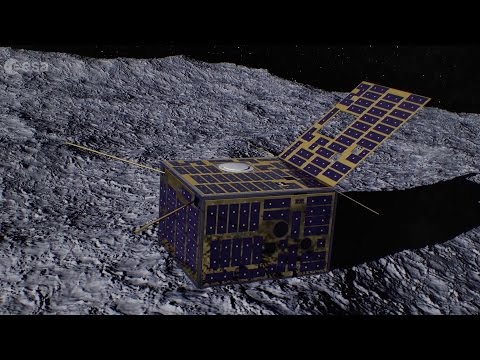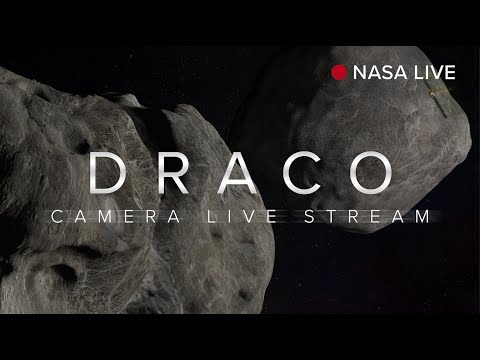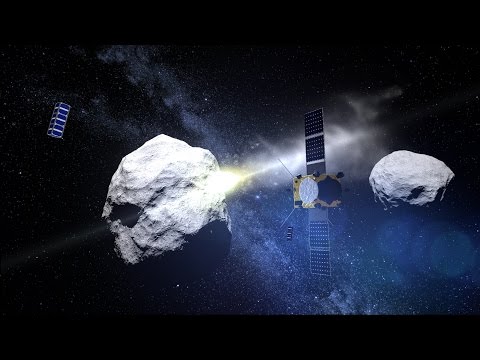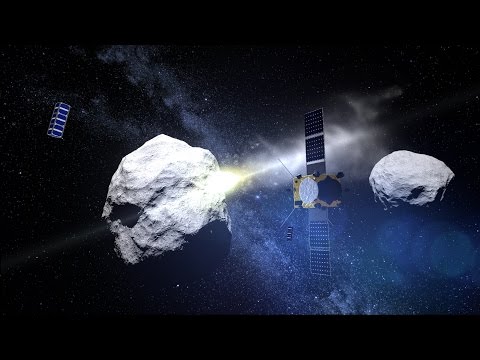Asteroid Impact Mission
The Asteroid Impact Mission (AIM) is a candidate mission currently undergoing preliminary design work.
Launched in October 2020, AIM would travel to a binary asteroid system ? the paired Didymos asteroids, which will come a comparatively close 11 million km to Earth in 2022. The 800 m-diameter main body is orbited by a 170 m moon, informally called ?Didymoon?.
This smaller body is AIM?s focus: the spacecraft would perform high-resolution visual, thermal and radar mapping of the moon to build detailed maps of its surface and interior structure.
The main AIM spacecraft is planned to carry at least three smaller spacecraft ? the Mascot-2 asteroid lander, being provided by DLR (Mascot-1 is already flying on JAXA?s Hayabusa-2), as well as two or more CubeSats. AIM would test optical communications and inter-satellite links in deep space, essential technology for future exploration.
If approved, AIM would also be Europe?s contribution to the larger Asteroid Impact & Deflection Assessment mission: AIDA. In late 2022, the NASA-led part of AIDA will arrive: the Double Asteroid Redirection Test, or DART, probe will approach the binary system ? then crash straight into the asteroid moon at about 6 km/s.
AIM is intended to be watching closely as DART hits Didymoon. In the aftermath, it will perform detailed before-and-after comparisons on the structure of the body itself, as well as its orbit, to characterise DART?s kinetic impact and its consequences.
This video is also available in the following languages:
French: https://youtu.be/8GjVhBQsISc
German: https://youtu.be/Sht_Kmaf5sU
Spanish: https://youtu.be/KpmuzduOjhE
Credits: ESA/ScienceOffice.org





Thank you ESA. Finally after billions of years and thousands of major catastrophies, a specie is able to secure this planet's destiny.
Cool
Why people are saying that an asteroid is going to hit earth in 2022?? Should i go confess my feelings to my crush and marry him cuz if that?s so i will do it
god dam hurry up and blow it up
Bro the asteroid comes at 2022 why would u start the tests that late
Go on ESA & AIDA, we need now more than ever such interesting and comprehensible European missions, and more to be leaders in certain fileds! Well done! Glad!
Just send a missle to it and blow to it so that the pieces that come from tue impact are small and burn up in atmosphere!